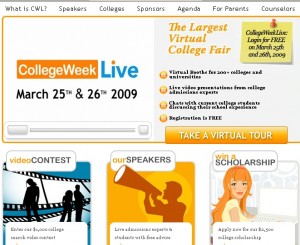College Admissions
College Admissions
Preparing for College
The Best College for You
What to Study
Applications
Education Options
Education Options
Private Universities
Public & State Universities
Community Colleges
Scholarships
Scholarships
African American Scholarships
Latino Scholarships
Native American Scholarships
Women Scholarships
College Grants
College Grants
Federal Grants
Merit Based Grants
Need Based Grants
Student Loans
Student Loans
Federal Student Loans
State Student Loans
No Co-signer Student Loans
Bad Credit Loans
Student Loan Consolidation
College Survival
College Survival
Financial Aid Tips
The Digital Student Blog
Growing up, I wasn’t a big fan of playing chicken. The version we played was rather innocuous in the greater scheme of things; riding one-speed bikes at one another until someone veered away certainly represented a rather harmless version of the concept.
But in what was clearly a version of the longstanding game, Pittsburgh Mayor Luke Ravenstahl apparently has dropped his proposed tax request. For those not up on the issue, Ravenstahl had been seeking a one percent tax on college tuition to help offset city revenue shortfalls.
 The fundamental key to the proposal was Ravenstahl’s assertion that nonprofits were falling short of paying their fair share of city costs. But according to news sources, six weeks after insisting the tuition tax was a critical component of the city’s financial future, the mayor has dropped a request that he appeared ready to pursue through the courts if need be. But in an amazing development, he stood with a group of people that included university presidents to announce he was dropping the proposal based on a promise of help from schools and other tax exempt corporations.
The fundamental key to the proposal was Ravenstahl’s assertion that nonprofits were falling short of paying their fair share of city costs. But according to news sources, six weeks after insisting the tuition tax was a critical component of the city’s financial future, the mayor has dropped a request that he appeared ready to pursue through the courts if need be. But in an amazing development, he stood with a group of people that included university presidents to announce he was dropping the proposal based on a promise of help from schools and other tax exempt corporations.
At the news conference, Ravenstahl cited a promise from the University of Pittsburgh, Carnegie Mellon University and Highmark Inc. to donate a larger sum of money to the city than they had previously pledged. In addition, he insisted that university leadership, the city council and other corporate leaders would work to craft a plan that would then be physically taken to Harrisburg (home of state government) to change specific rules related to the city’s finances.
Increasing Taxes
While raising taxes in a recession is normally deemed a political nonstarter, Ravenstahl had previously proposed a number of revenue enhancements to help the city solve its financial woes. Two publicized suggestions involved increasing the $52-a-year tax on people who work in the city and expanding a current tax on payrolls to include previously tax-exempt employers.
But it was Ravenstahl’s proposal, a first-in-the-nation 1 percent tuition tax, that has received the most attention. And while higher education in the city received significant early support in its opposition to the idea, news accounts had a significant legal battle looming, especially since a council majority appeared to be in support of the measure.
With both the city and higher education about to potentially spend exorbitant sums of money on legal expenses, it seems that the mayor may have managed to get the schools to turn away first. The developments seemed to be akin to giving in to the mayor’s demand earlier in the month for a pledge of $5 million in donations in return for dropping the tax.
In a sign that they at least understood how things might look to the public, Pitt Chancellor Mark A. Nordenberg told sources the universities were not “negotiating under the force of the pressure of the tax.” Carnegie Mellon President Jared Cohon added, “We’re not pledging a contribution in order to get rid of the tax. We are prepared to pledge a contribution as the tax is gotten rid of.”
 But in a clear sign the mayor got the attention of the nonprofits, the institutions have decided to rethink their prior contribution commitments. Adding yet another feather in the mayor’s cap was the suggestion that future agreements with individual organizations will be made public.
But in a clear sign the mayor got the attention of the nonprofits, the institutions have decided to rethink their prior contribution commitments. Adding yet another feather in the mayor’s cap was the suggestion that future agreements with individual organizations will be made public.
According to blogger Mark Potter, nonprofits have not been contributing their fair share. “Some of the city’s biggest employers,” writes Potter, “its institutional non-profits, are still paying the least to support city operations.
“… until the tuition tax came along, nonprofits this year were content to shell out a voluntary donation that was less than two thirds of what they contributed back in the 1990s. Name another constituency in this city — residents, for-profit business, commuters — whose non-voluntary obligations have dropped that much.”
Tuition Tax
While state representatives have suggested that the mayor’s tax proposals were “half-baked” or “misguided,” the nation was watching the tuition tax levy very carefully. The idea has been postured in a number of other cities, particularly in light of current fiscal environments that have many state and local governments facing revenue shortfalls despite continued demand for much-needed services.
In today’s economic downturn, city governments face tea-party-like resistance to any suggestion of raising taxes. In contrast, colleges across the country still raised tuition and fees amidst the severe economic downturn.
That step certainly caught the attention of more than just the student population. Meanwhile, the subsequent events in Pittsburgh should certainly serve as a wake up call for all non-profits – ante up, or else.
Either that, or you soon will be playing a political game of chicken as well.
The city of Pittsburgh is abuzz over the announcement of Mayor Luke Ravenstahl’s proposed plan to institute a 1 percent tax on college tuition for the 2010 budget.
 Calling the revenue enhancement the “Fair Share Tax,” Ravenstahl has estimated the proposal could raise as much as $16 million for the city. And while conservatives would insist this is just another case of taxing anything that moves, Ravenstahl sees it otherwise.
Calling the revenue enhancement the “Fair Share Tax,” Ravenstahl has estimated the proposal could raise as much as $16 million for the city. And while conservatives would insist this is just another case of taxing anything that moves, Ravenstahl sees it otherwise.
When it comes to the students taking classes within city limits, it is “the city and its taxpayers” that “bear the burden of providing them with services” states Ravenstahl. The youthful mayor goes on to claim that the “Fair Share Tax” idea is a result of his inability to fairly tax commuters and non-profit institutions.
Colleges Have Themselves to Blame
Naturally students and college officials have raised an uproar over the proposal. But as we muddle through what many experts call the greatest financial challenges since the Great Depression, state and local governments are struggling to balance their books as their revenues decline. All across the country, those same agencies, faced with enormous budget shortfalls, are making massive cuts to services. Without further revenues, those agencies will need to cut services much further over the next few years.
Meanwhile, colleges have dealt with the financial crisis by raising the cost of tuition and fees. According to web sources, at private four-year colleges, the increase was 5.9 percent over the prior year. At public four-year colleges, the increase was 6.4 percent over the prior year. Those increases simply reflect an ongoing trend that has continued unabated for the past thirty years and have critics insisting higher education has dealt with the fiscal crisis by passing the problem on to their students.
And of course, when it comes to fees, colleges and universities have written the book on how to add extra charges. Today’s typical college bill will include a lengthy list of fees from technology to student activity to labs to the parking sticker on a car, all above and beyond the basic tuition and room and board charges. Talk about taxing anything that moves.
Flat Percentage Concept
What makes the proposal so interesting to many outside the field of education is the notion that it would be a 1 percent tax on tuition. With private colleges now topping more than $30,000 a year in tuition, the tax would hit students much harder at what are often dubbed the “elite schools.”
 In contrast, at community and public colleges, where tuition is much cheaper, the student assessment would be much lower. This of course has a few folks insisting that the tax may actually be fair. That stated, those who attend the wealthier schools would insist they do not consume a larger portion of the city’s services than say students from a school where tuition was much lower.
In contrast, at community and public colleges, where tuition is much cheaper, the student assessment would be much lower. This of course has a few folks insisting that the tax may actually be fair. That stated, those who attend the wealthier schools would insist they do not consume a larger portion of the city’s services than say students from a school where tuition was much lower.
The mayor has hired Joseph C. Bright, former chief counsel to the state Department of Revenue, to help pursue the 1 percent levy on tuition. Bright is on record as stating that the city will win the necessary court battle to have the tax in place for 2011.
However, one State Representative Paul Costa has announced plans to introduce a bill to put an end to the tuition tax proposal.
A Downer for Pittsburgh Students?
The levy would certainly be a major issue if Pittsburgh were the only city to institute such a tax. Seemingly, fewer students would enroll in a Pittsburgh college if such a tax were in place.
However, Inside Higher Ed has noted that Pittsburgh is not alone in discussing the idea, citing recent discussions to tax revenues from higher-education institutions in Boston, Providence, and Berkeley.
As the battle moves forward, we can be certain that the rest of the nation will be watching very closely. And we would suspect more than a few city officials across our great land, jealous of how easily colleges pass hikes onto students, could immediately move forward with proposals of their own should the concept be enacted in Pittsburgh.
It is deemed to be one of the “most popular courses in Harvard’s history.” And now, thanks to WGBH television and Harvard University, every American has an opportunity to examine the moral and ethical issues that form Michael Sandel’s course “Justice.”
In opening this classroom to the world, Harvard gives us a taste of the future of higher education. With the proper preparation and a gifted-instructor, the course is proof-positive that high quality education can be delivered online.
In fact, one might honestly ask, what is the advantage of actually being seated in the auditorium where Sandel teaches. The incredible numbers of students eliminate any intimacy and any real possibility of discussion within the “classroom setting,” i.e. stadium-style lecture halls.
That said, the critical components of the twelve-part series are the content and the complex moral questions being posed. Addressing the hot topics of our day (affirmative action, same-sex marriage, patriotism and rights), Sandel offers a constant stream of provocative questions that provide for outstanding discussion opportunities.
As but one example of how to use content to drive instruction, in episode 2, How to Measure Pleasure, Sandel offers video clips from three distinct and different elements of the entertainment world: clips from Shakespeare’s Hamlet, the reality show Fear Factor, and The Simpsons.
The course also features opinion polls, pop quizzes, in-depth readings and discussion guides offering two levels of debate, beginner and advanced depending on your current background.
As for one rationale for the online version exceeding the traditional classroom model, online classes now offer literally endless possibilities for rich discussions with viewers from around the world. Not only are such discussions impossible in the auditorium where the class is presented, online discussion forums remove the need for students to gather collectively on a single campus.
The two drawbacks? First, there is that same mentality that features the typical time constraints of all education, materials are being released weekly.
Second, the method for earning those all-important credits that can be collected to earn a college diploma.
But as for the model of what could be, Justice is the real deal!
Generally speaking, I love attending college sporting events. The atmosphere can be electric and the games certainly provide an opportunity for students to get a little rowdy with friends.
In sum total they can serve as a much needed-alternative to the stress of papers and tests.
But unfortunately, the college athletic model has succumbed to the same pressure that drives the professional sports world: money. The quest for the almighty dollar can lead to shameful behaviors, greed being what it is, and to situations like the recent one involving the Memphis men’s basketball program.
 At the same time, the Memphis situation reveals the perverse world of college athletics, one where the two people most responsible for a problem, the student-athlete and the coach, somehow manage to earn greater sums after the incident, while the people least responsible, the player’s teammates, become victims of the greedy system.
At the same time, the Memphis situation reveals the perverse world of college athletics, one where the two people most responsible for a problem, the student-athlete and the coach, somehow manage to earn greater sums after the incident, while the people least responsible, the player’s teammates, become victims of the greedy system.
Using an Improper Player
Under the current model, college coaches recruit gifted players, many who would not academically qualify for admission if not for their athletic talents. Even the best schools today adjust their admission standards so as to be able to compete in the financially lucrative world of college athletics.
The recent Memphis situation involved the immensely talented Derek Rose (in what amounts to the biggest sham going, Rose is not actually named as the culprit), a young man who had failed to reach the minimal ACT score for college eligibility during his first three efforts. Given that a college scholarship was on the line and a new professional basketball policy that prevented teams from drafting players directly out of high school, Mr. Rose apparently engaged a surrogate student to take and pass the SAT test.
As but one sign that the coach recruiting Derek Rose might think something was amiss, Rose lived in Chicago. But the passing SAT score was obtained in Detroit, some 283 miles from Rose’s home city.
That did not deter John Calipari from signing the marginal student. Thus, for the second time in Coach John Calipari’s career he took a team to college basketball’s biggest stage, the Final Four, using an ineligible player.
In both cases, the issues were revealed after the fact, and as a result the governing body of college athletics, the NCAA, expunged the team performances from the record books. In the case of Memphis, the team’s 38 wins were forfeited and the Tigers name removed from being a final four participant.
Rich Get Richer
While the school and the other players who were part of the team have seen their performance vacated, Rose and Calipari have simply shrugged their shoulders and moved on to mounds of cash. Rose of course became a first round pick of the NBA after his one tainted season at Memphis. The rookie earned a little more than $5 million in his first season with the Chicago Bulls.
Meanwhile Calipari has managed to secure a brand new position in Lexington where he will coach another legendary basketball program, the Kentucky Wildcats. His salary comes in just under that of Rose, in the four-million dollar a year range.
A few outside Kentucky have asked a rather simple question: was Calipari in a position to know better? One would think the answer was yes, that a prudent person would have had significant doubts about how Rose managed to pass his exam.
But the money involved in high-profile college athletics tends to make some coaches hesitate. In this case, Calipari did more than hesitate, he ignored the obvious.
 In essence, it would also seem the NCAA felt likewise. Why else would it eventually rule that Memphis had to vacate its entire season including their Final Four Appearance?
In essence, it would also seem the NCAA felt likewise. Why else would it eventually rule that Memphis had to vacate its entire season including their Final Four Appearance?
But in yet another head-scratcher, a sign of all that is wrong, the folks who hired Calipari at Kentucky continue to stand by their choice despite the developments at Memphis. They insist that Calipari was not responsible for the issues related to Rose.
Indirectly, they also are conveniently ignoring that Calipari is now the only college coach in history to have two Final Four teams stripped of their accomplishments by the NCAA.
A Model Governed by Money
As with all legal cases that have huge financial ramifications, the ruling is being appealed by Memphis. Pending that appeal, Calipari has indicated he will not discuss the issue.
But he will start coaching at Kentucky irrespective of that appeal. That certainly has the folks at Kentucky hoping that what “happened in Memphis will stay in Memphis.” But as one more sign as to the flaws in the current model, consider the incentives, above and beyond the $4 million base salary, that Kentucky has placed in the Calipari contract:
College sports and money – how the model must change.
The latest Internet spin-off site, The Awl, has noted that 2009 is well on its way to being a record year for a few mythical figures: the Rain Gods and the Grim Reaper.
Here in the northeast we cannot quibble. It has been a phenomenal year for the Rain Gods.
And nationally the death toll seems to be matching serve. Without a doubt, after the recent passings of Michael Jackson, Walter Cronkite and Frank McCourt, it would seem that 2009 is shaping up to be an phenomenal year for the Grim Reaper as well.
Pulitzer Prize Winning Author and Teacher
While the deaths of Jackson and Cronkite have dominated the news cycles, the passing of McCourt surely ranks as another noteworthy loss. The author of Angela’s Ashes earned literary stardom late in life, receiving the Pulitzer Prize for his heartfelt memoir of his Irish-Catholic upbringing.
 The author was also a teacher who plied his trade in New York. McCourt later revealed some great tales regarding that time in his life in yet another strong work, Teacher Man.
The author was also a teacher who plied his trade in New York. McCourt later revealed some great tales regarding that time in his life in yet another strong work, Teacher Man.
One of the most referred to stories in the book features the true brilliance that embodies McCourt and the best of the teaching profession: the ability to make a relevant lesson plan. In this instance, McCourt returns to his students some of the excuse notices that he has received, the very notes they forged in an effort to pull the wool over the old man’s eyes.
Understanding that following up on such notes would require near 24-hour-a-day vigilance, he instead collects the notes before one day he has an epiphany. Though forged, the notes represented a piece of creative writing from his charges, a treasure trove of fiction and fantasy that could serve as a catalyst to some great writing.
Teacher Extraordinaire
One day, McCourt typed out roughly a dozen of the notes he had received and distributed them to his senior classes. After the students read them silently, McCourt informed them they were about to become the first class to “study the art of the excuse note.”
He tells them one day they may well need to construct excuse notes for their own children. McCourt instructs them:
“Imagine you have a 15-year-old who needs an excuse for falling behind in English. Let it rip.”
The results were so astonishing, a “rhapsody of excuses” so brilliant, so creative, and so exciting that even the students liked what they were doing. They wanted more. McCourt was able to deliver once again.
 He asked them to write excuse notes of mythical proportions: ‘An Excuse Note from Adam to God’ or ‘An Excuse Note from Eve to God.’ Not only did students come to class the next day with their homework done, they had taken the lead, one bringing in Lucifer and another young lady who simply claimed she was tired of God sticking his nose into other people’s business.
He asked them to write excuse notes of mythical proportions: ‘An Excuse Note from Adam to God’ or ‘An Excuse Note from Eve to God.’ Not only did students come to class the next day with their homework done, they had taken the lead, one bringing in Lucifer and another young lady who simply claimed she was tired of God sticking his nose into other people’s business.
Those notes promptly created heated discussions of guilt and sinfulness and that perhaps God could “have been more understanding of the plight of the first man and woman.” So enthralled were the students that McCourt kept going, throwing other names up on the blackboard, and asking the students to write a good excuse note for some historical figures: Eva Braun, Judas, Attila the Hun, Lee Harvey Oswald and Al Capone.
Not too surprisingly, at that point one student wanted to know if McCourt could put the names of certain teachers on the board.
If You Are Thinking of Teaching
The story reveals a special trait that great teachers embody: a full understanding that to get students interested, one first has to first reach them where they are at.
If he could, he had the chance to do great things, to then take them someplace they would never have gone on their own. Ultimately, McCourt doesn’t just get these kids to review the notes they forged (oh my, what lessons were never discussed), he takes them on the creative journey of a lifetime.
For those considering teaching as a profession, Teacher Man is a must read. The author certainly was someone to emulate.
And with McCourt’s passing, one can’t help but wonder how his charges might handle this news, what they might pen for a note these days. No doubt, many would seek to chastise the Grim Reaper for taking their ‘teacher man’ so soon.
A new report from a leading research market company, the NPD Group, reveals major confusion regarding netbooks, the latest portable computer option. According to the study, 60 percent of those purchasing a netbook did so thinking that the portable device would offer the same functionality as that of a laptop or notebook.
Because of that faulty thinking, only 58 percent of consumers who bought a netbook instead of a notebook said they were very satisfied with their purchase. Perhaps most significantly, in the 18- to 24-year-old age group, 65 percent indicated they had expected a better performance from their netbook.
 However, that dissatisfaction, according to NPD, comes primarily from a lack of understanding by the purchaser as to what the capabilities of a netbook are.
However, that dissatisfaction, according to NPD, comes primarily from a lack of understanding by the purchaser as to what the capabilities of a netbook are.
Just What Is a Netbook?
Before you consider purchasing a netbook, it is important to clearly understand what the machine is designed to do. First and foremost, the idea of a netbook is increased mobility.
In simplest terms, a netbook is a small, cheap, and under-powered computer that runs either an old (Windows XP Home) or the unfamiliar Linux operating system. If you are a fan of or extremely used to specific software, it is extremely important to understand that a netbook will not run XP Professional, Vista, or OS X.
By small size, we are talking generally 7- to 10-inch screen sizes and machines weighing somewhere between 2 and 3 pounds. That small size also translates to keyboards that are roughly 80 to 90 percent of that of a laptop.
As for price, these new computers range from $300 to $500 (if the price exceeds $500, there is no sense considering a netbook, go with a laptop instead).
What You Get and What You Don’t Get
The key concept here is cheap, basic computing ability with a high level of portability. If you are not interested in mobility, i.e., routinely taking it out of the dorm room, then there is no reason to consider a netbook. You can and you should go with a desktop with far more power for the same price.
 With a netbook you have to give up playing CDs and DVDs and generally have to accept an older version of Ethernet/Wi-Fi that is functional but not quite as fast. Essentially, netbooks can be thought of as last year’s technology – instead of being cutting edge the intent is to perform using old staples, the proverbial computing that is not necessarily the best but is in fact good enough for most applications.
With a netbook you have to give up playing CDs and DVDs and generally have to accept an older version of Ethernet/Wi-Fi that is functional but not quite as fast. Essentially, netbooks can be thought of as last year’s technology – instead of being cutting edge the intent is to perform using old staples, the proverbial computing that is not necessarily the best but is in fact good enough for most applications.
That said, one key element of the netbook concept is that it could render the Kindle or other e-readers to the scrap heap very quickly. As experts have noted, why would you want to carry a small device that does only one thing when you can carry a small box that does more than one thing.
While its screen and keyboard are small, a person can always connect their netbook to another monitor or use it with a mouse and/or traditional keyboard. Of course, without these external connections you still can do basic web tasks (web surfing and email) as well as other computer basics such as word processing and data spreadsheet work.
When purchasing, it is imperative that you consider the various models available. Screen sizes vary from 7 inches to 10.2 inches. It is critical that one understand just how small 7 inch screens are. Of course, the larger is less mobile so it is critical to be sure of your objective.
Keyboard sizes are also worth looking at if you are going to be doing some serious amounts of word processing. Again, the larger the screen, the larger the device so if you go for a 10 inch screen you get a keyboard that is about 90 percent traditional size, a huge positive if you will be typing a lot. One other factor to consider is that some machines offer non-standard board arrangements – if you are a skilled typist you do not want a machine where keys have been moved to different locations.
Lastly, a key consideration is battery life. There are generally two options, standard or extended battery packs (these correspond usually to 3-cell and 6-cell batteries respectively). The standard provides about two hours of computing power, the extended about four hours. But again, know your needs as the extended battery pack is of course much larger and therefore heavier.
Know What You Are Purchasing
 While netbooks are very inexpensive, the last thing any of us need is another electronic device we do not use. Therefore, it is critical that purchasers understand the rationale behind the creation of the netbook and the stated purpose of these portable computers.
While netbooks are very inexpensive, the last thing any of us need is another electronic device we do not use. Therefore, it is critical that purchasers understand the rationale behind the creation of the netbook and the stated purpose of these portable computers.
Don’t be one of those in the 18- to 24-year-old age demographic that is disappointed after shelling out the dollars by the limitations of these machines. If those limitations are in fact disappointing to you, just spend the additional money to purchase a laptop.
But if you do so, just be sure you are in good enough shape so as to be able to cart the beast around with you.
Stating that the internet has changed life as we know it is an understatement of epic proportions.
Still, even for those who understand the power of the internet, it is hard to imagine stories like that of Miss Pipi Quinlan, certainly not prior to the technology age. But her story offers some critical lessons for those of every age.
For those who missed it:
Three-Year Old Purchases Excavator Online
Young Pipi Quinlan had, at last, been given permission to use the family computer. Of course, at three-years-old she was still a tad on the youngish side for such permission and her access had been allowed for but a week when she made internet history.
 You see, her mom had done what so many of us do (here’s the first place we all need to pay attention). Ms. Quinlan had asked the computer to store log-in information to make it easier to bring up those sites she would use frequently.
You see, her mom had done what so many of us do (here’s the first place we all need to pay attention). Ms. Quinlan had asked the computer to store log-in information to make it easier to bring up those sites she would use frequently.
Mom had set up such a log-in on an auction site which Pipi then managed to reboot. While mom had used the site earlier to bid on some toys, Pipi took a little different track.
Instead of a kid’s plaything, she bought a man’s toy, managing somehow to place a bid on a Kobelco, a “digger” as folks in New Zealand referred to the excavator. Though still no one is not quite sure how, the youngster had posted a bid of 20,000 New Zealand dollars, about $12,300 by our standards, for an earth mover that was anything but a toy.
Momma Quinlan learned of her daughter’s action when she opened her e-mail the following morning. There she found several e-mails from, the auction site TradeMe, announcing she had won an auction and from the seller noting that she would love her new purchase.
Fame and Notoriety
The story of course reminds us why we should never store personal information on a computer. It also makes it clear that when we become parents we need to think things through a wee bit more carefully because children are amazing little creatures.
In the age of the internet, technology can create issues we never conceived of previously. Most of the focus has been on the actions of the youngster.
And of course, the press had a field day with one liners (toddler usually prefers high-heeled pink shoes over giant yellow and black diggers).
 But what is truly amazing is an internet search of the name Pipi Quinlan now reveals page after page of links to reports and commentary of this cute little story (OK, us too). It reminds us that in this day and age, privacy is minimal and our actions can be shared globally in the matter of minutes.
But what is truly amazing is an internet search of the name Pipi Quinlan now reveals page after page of links to reports and commentary of this cute little story (OK, us too). It reminds us that in this day and age, privacy is minimal and our actions can be shared globally in the matter of minutes.
Whether she likes it or not, this information will always be part of her online brand. Fortunately, this could be one of those cute stories that ultimately works in her favor sometime in the future. We hope so as it will be archived forever.
All’s Well that Ends Well
Meanwhile, it seems the story has ended positively. The auction site has negated the winning bid and reimbursed the seller’s costs. Reportedly another adult went on to make the purchase for real.
The elder Ms Quinlan also noted one of parenting’s greatest challenges. You see, it was extremely difficult explaining to the three-year-old the gravity of her actions, especially doing so without laughing.
In addition, the parents have learned another valuable lesson. Pipi has since been banned from using the computer by herself but, just in case, the Quinlans have deleted all their automatic log-ons just in case.
The only question remaining is how long before you delete yours?
When it comes to graduation events, most of the media focus the past couple of weeks has been on President Obama’s appearance at Notre Dame. The decision of school officials to invite the president to deliver the commencement address and award him an honorary degree was clearly not sitting well with many Catholics.
Given the president’s views on abortion, protesters have been reportedly out in great numbers. In addition, one person set to be honored offered the greatest of protests as she opted to decline a prestigious award.
Less Media Coverage
Lost amidst the hoopla was a mind-numbing story from another prestigious college, Morehouse in Atlanta, Georgia. In yet another of those situations where the term justice seems to have totally taken a hiatus, about 500 students were set to graduate without such protests.
This despite the fact that one perpetrator, Joshua Brandon Norris, was graduating and his victim, Rashad Johnson was not.
 The back story represents one of the more troubling tales we have read about in years. Norris was graduating despite the fact that he had shot Johnson three times.
The back story represents one of the more troubling tales we have read about in years. Norris was graduating despite the fact that he had shot Johnson three times.
That’s correct. Norris had pulled a gun on Johnson in an altercation outside a night club in 2007. A scuffle ensued and Norris shot Johnson three times.
The Plea Deal
Facing one count of aggravated assault with a deadly weapon and second count for possession of a firearm during the commission of a felony, Norris attended a court hearing in January. There he was offered the plea deal by the prosecutor.
Norris pleaded no contest to the first count and the second charge was dropped. He ultimately received six years of probation, a $1,000 fine and 240 hours of community service.
Somehow, the incredible plea deal was also accepted by the presiding judge.
And since he avoided any jail time (he faced up to 20 years), he was able to remain in school to complete his degree. In fact, the plea deal mandated that he remain in college and complete his college degree.
Not a School Issue
Understandably, Johnson and his family were astonished to learn of the deal. Johnson, one bullet still in his left leg, had left Atlanta and gone home to California to be with his mom and to recover from his injuries.
Fahizah Johnson, the victim’s mom, took issue with the school.
“I am so disappointed because Morehouse has been an institution in my family for three generations,” she told CNN. “This guy shot my son three times, and he’s still in school? He’s still a student with other students?”
 While CNN also seems to take exception to the actions of Morehouse, the school is not at fault. The incident took place off school grounds and the legal verdict essentially mandated that Norris attend school.
While CNN also seems to take exception to the actions of Morehouse, the school is not at fault. The incident took place off school grounds and the legal verdict essentially mandated that Norris attend school.
Therefore, there was simply no recourse for the school. Refusing to let Norris return to school would not have been legally supportable regardless of the actions he took.
The issue was an appalling set of decisions by the prosecutor in the case.
No Longer a Morehouse Man
According to CNN the prosecutor of the case has since resigned. His boss insists he would have been fired had he not quit.
Little has been said about the judge’s role.
The one step Johnson can take is to separate himself from the school and the city. Despite the school being a longstanding family tradition, Johnson has done just that.
He is now attending Sacramento City College and plans to attend law school after he graduates in 2011.
The internet has been abuzz the last couple of days after UK-based Birmingham City University announced it would offer a master’s degree level program in social media.
Eyebrows have been raised and critics on both sides of the concept have been weighing in on the idea that college students could soon be able to earn a graduate degree based on their knowledge and ability to use Facebook, MySpace, Twitter and Bebo.
The Program
 The one-year course in social media will explain how to set up blogs and publish podcasts in addition to focusing on social networking sites as communications and marketing tools.
The one-year course in social media will explain how to set up blogs and publish podcasts in addition to focusing on social networking sites as communications and marketing tools.
The designer of the program, Jon Hickman offered the following insights to the British media:
“During the course we will consider what people can do on Facebook and Twitter, and how they can be used for communication and marketing purposes. It’s not for freaks or IT geeks, the tools learned in this course will be accessible to many people.”
Required to conform to university academic standards, the course will “entail synoptic research and scholarly activity,” two fundamental criteria for approval for a Masters level program. The new concept will feature a mixture of lectures, seminars, research workshops, presentations and field-trips.
To earn a masters in social media, students will have to complete either a social media production project or an original piece of research in the form of a 15000-word dissertation.
The Basis for Providing a Program
As for a rationale for a graduate program in social media, Hickman went on to add:
“It’s very relevant and very scholarly. It’s a new course, but its importance is unquestionable.
“Social media is very important for jobs within the marketing and communications sector, as a skill set within other jobs, and as an industry within itself.”
Hickman is not the first to propose the future importance of social media. Michael Wesch, Assistant Professor of Cultural Anthropology at Kansas State, has often advocated that Facebook could be a useful tool in the educational setting.
Well-known for a number of YouTube videos that have taken the internet by storm, Wesch offers that as a university professor he has found Facebook to be very useful.
The professor understood long ago that Facebook was not only a great tool for expressing a person’s identity and sharing that identity with friends, the site provided all the tools necessary to create an online learning community.
Based on Wesch’s support for the use of Facebook, some have postured that all teacher training programs should involve some instruction in social media.
However, the Birmingham program will focus more on the business use of social media and using this new technology for commercial gain. Information available at the school’s web page also notes the new MA program will not only explore the techniques of social media as a creative industry but will seek to contribute new research and knowledge as to other potential uses for these networking sites.
Many Questioning the Instructional Value
Naturally, there are critics of the new program. Many people see social networking sites like Facebook or MySpace as nothing more than off-task behavior for today’s net generation. These critics find the idea that colleges have begun offering courses in social media nothing short of appalling.
 At the same time, the generation that has become dubbed as digital natives is wondering why anyone would need a course to learn how to socialize on Facebook or converse with Twitter. After announcing the program, Hickman could find a number of blogs that were insisting that the program as constructed was too basic.
At the same time, the generation that has become dubbed as digital natives is wondering why anyone would need a course to learn how to socialize on Facebook or converse with Twitter. After announcing the program, Hickman could find a number of blogs that were insisting that the program as constructed was too basic.
In addition, there was a question as to who would teach these courses as there certainly can not be any credentialed college professors who themselves have earned a degree in the social networking field. That led some to postulate that the students in the program would likely know more than those responsible for course instruction.
Indeed with such a cutting-edge program, knowledge would appear to be developing every day – in fact, as yet another critic postulated, the developments in social media are occurring so rapidly the program will likely be out-of-date before the first graduating class heads off into the sunset.
More details on the university set to break the mold are available here.
Flickr photos courtesy of Amit Gupta and Boris Veldhuijzen van Zanten.
High school students looking to learn more about the college application, admissions and choice process have a great upcoming opportunity next month.
CollegeWeekLive, the world’s biggest virtual college fair, has been set for March 25th and 26th. Featuring more than 250 colleges and universities from around the world, the annual event is expected to see as many as 28,000 attendees.
What makes CollegeWeekLive so unique is that it offers all of the standard college fair information that students seek when attending such an event but does so in an online format. Therefore, from one’s home or school computer, a prospective college student has access to a wealth of information in a cost-effective and convenient manner.
 The bi-annual event (held each November and March) offers students access to some of the top experts in the field. Virtual fair attendees can watch admissions experts speak on SAT preparation, the application essay process and or how to pay for college. Attendees will also be able to ask various questions via live chats.
The bi-annual event (held each November and March) offers students access to some of the top experts in the field. Virtual fair attendees can watch admissions experts speak on SAT preparation, the application essay process and or how to pay for college. Attendees will also be able to ask various questions via live chats.
The event will also feature virtual booths for the various colleges taking part in the fair. These booths will offer student attendees electronic brochures, videos, webinars, and podcasts related to the school. In addition, students will have the opportunity to real-time Instant Message and/or video chat with admissions counselors and students from those institutions.
As for the specific, potentially-valuable presentations for students March 25th offers:
 On the second day, March 26th, scheduled topics and presenters include:
On the second day, March 26th, scheduled topics and presenters include:
More details on the proposed agenda as well as relevant links to some of the presenters are available on the CollegeWeekLive agenda page.
Though the program should be extremely worthwhile, as an added incentive to folks, College WeekLive will be giving away a brand new 13-inch aluminum MacBook to one lucky attendee of the fair! . There is a video contest and the chance to win a $2,500 scholarship to the college of your choice.
And if you attended the November CollegeWeekLive and are still a current high school student, you can also complete a survey that will make you eligible to win an iPod Touch or a $300 donation to the charity of your choice. High school seniors will find the link to their survey here while underclassmen will find a separate survey at this location.